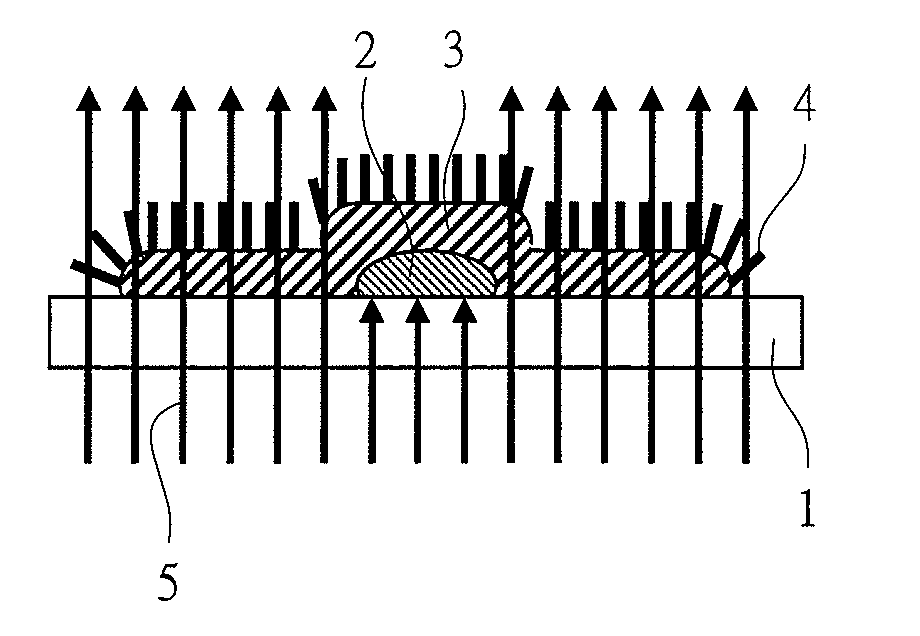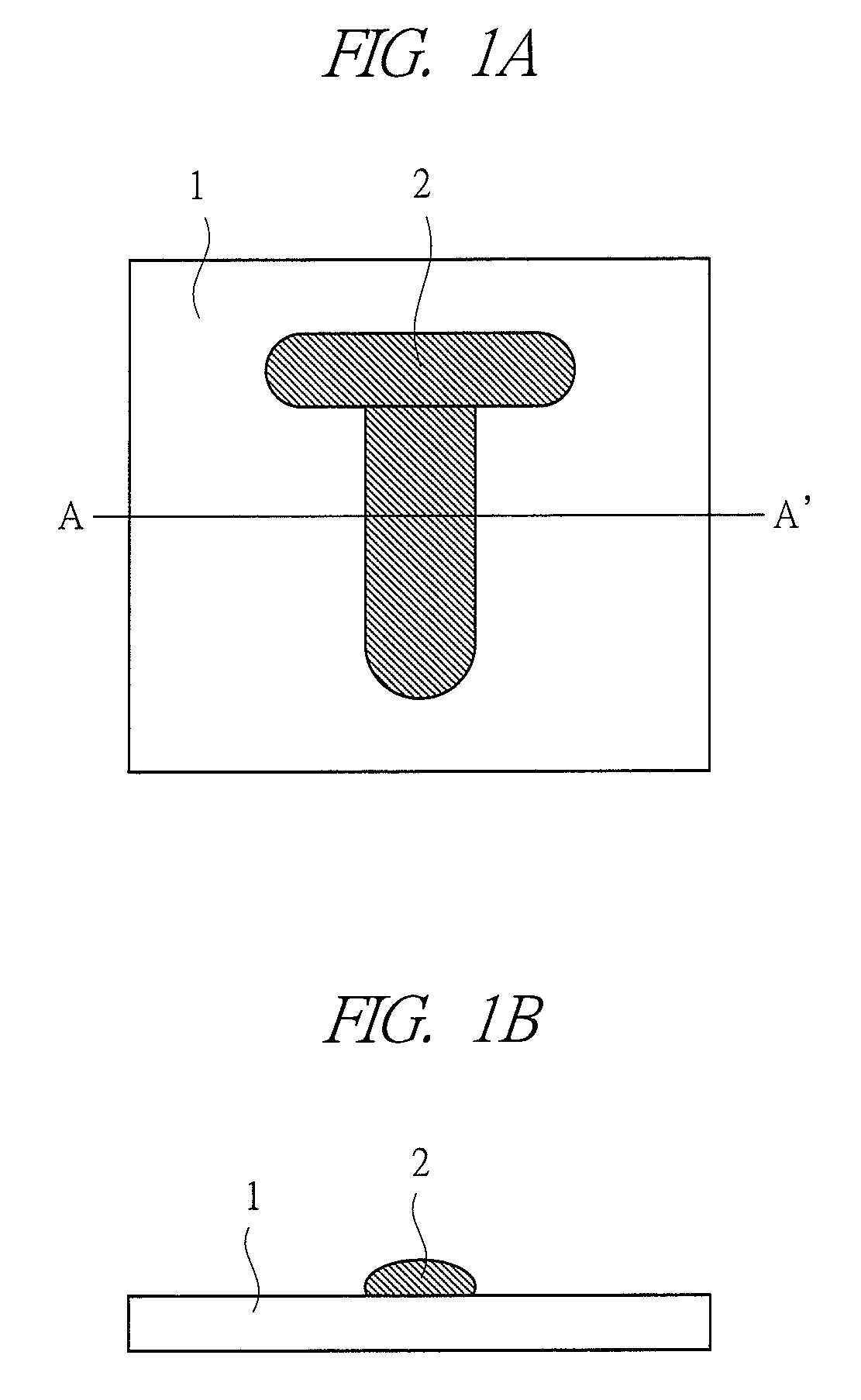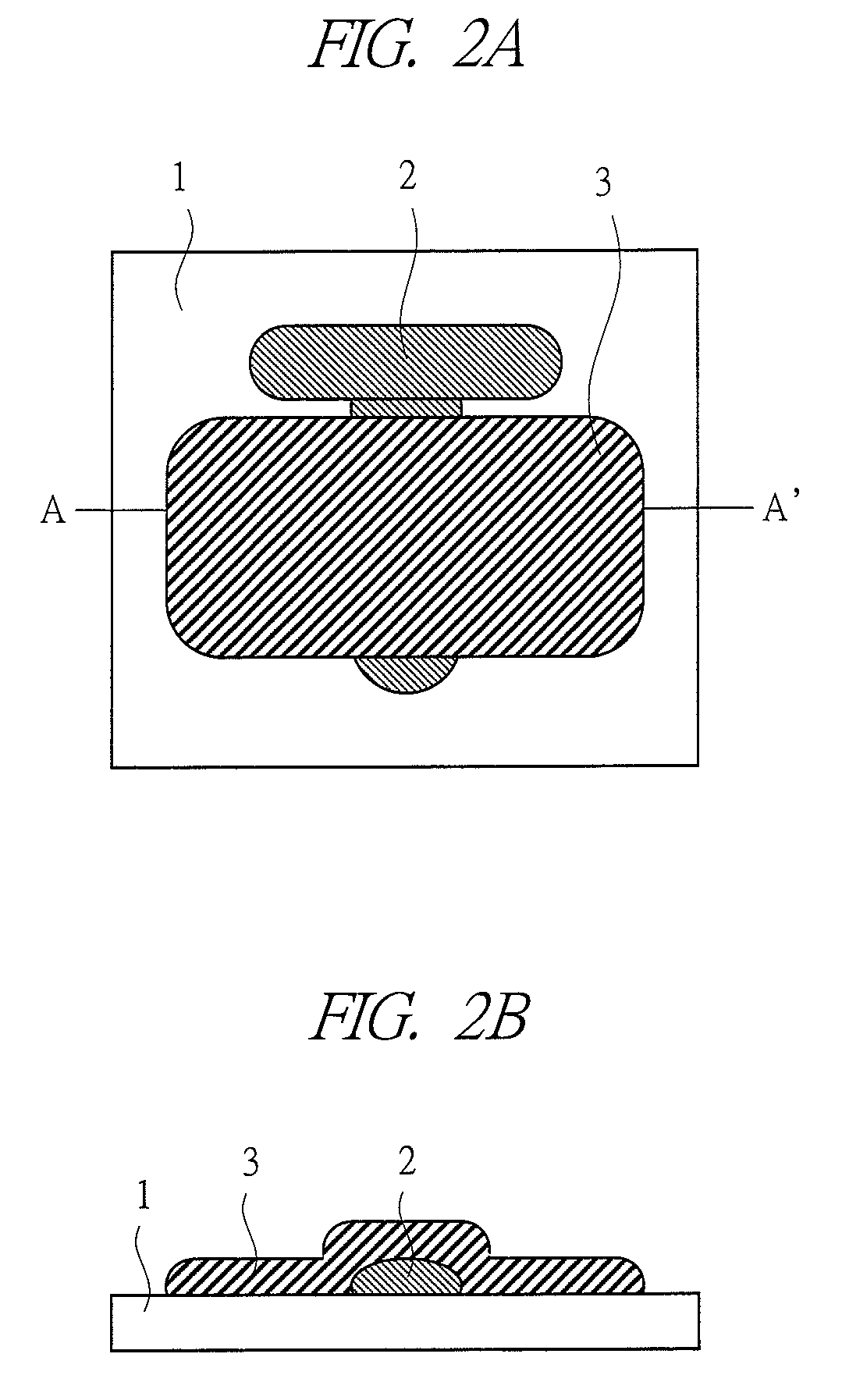Method for exposing photo-sensitive SAM film and method for manufacturing semiconductor device
a technology of photosensitive sam film and manufacturing method, which is applied in the direction of photomechanical equipment, photosensitive material processing, instruments, etc., can solve the problems of increased manufacturing cost, inability to fabricate fine tft by printing process, and inability to meet the requirements of the respective processes and apparatuses, etc., to achieve accurate alignment
- Summary
- Abstract
- Description
- Claims
- Application Information
AI Technical Summary
Benefits of technology
Problems solved by technology
Method used
Image
Examples
first embodiment
[0089]A photo-sensitive SAM film is formed on a silicon wafer by dipping the silicon wafer in 0.1 w % toluene solution of a photo-sensitive self-assembled-monolayer material (5-methoxy-2-nitro-benzyl 4-(trimethoxysilyl)butanesulfonate) for 20 minutes. The contact angle of water of the surface of the substrate at this time is 95°. Three pieces of such substrates are prepared, and one of them is exposed in the atmosphere and the other two substrates are respectively exposed in toluene and in tetramethylammonium hydroxide (TMAH) 2.38 w % aqueous solution in the exposure system shown in FIG. 23 with using a high pressure mercury lamp as a light source.
[0090]As a result, in order to decrease the contact angle completely, an irradiation dose of 40 J / cm2 is required in the atmosphere. Further, it is found that, in the exposure in toluene and TMAH, the contact angle settles at 20° by an irradiation dose of 6 J / cm2 which is about one-sixth of the irradiation dose in the exposure in the atmos...
second embodiment
[0092]FIG. 1A to FIG. 8B are plan views and sectional views of a device shown in order of manufacturing steps of this embodiment in which source and drain electrodes are formed by exposure from the rear surface of the substrate. FIG. 1A to FIG. 8A are top views, and FIG. 1B to FIG. 8B are sectional views taken along the line A-A′ in respective FIG. 1A to FIG. 8A. In the top views and the sectional views of the device shown in order of the manufacturing steps in the specification of this application, FIG. 1A to FIG. 8A show top views and FIG. 1B to FIG. 8B show sectional views.
[0093]Polycarbonate which is an organic compound is used as a translucent substrate 1, and a gate electrode shape with a line width of 20 μm is printed on the substrate 1 by the ink-jet printing method with using gold nanoparticles dispersed in toluene solution as ink. Then, the substrate 1 is heated for 5 minutes at 200° C., thereby forming a gold gate electrode 2 (top view: FIG. 1A, sectional view: FIG. 1B). ...
third embodiment
[0100]This embodiment describes an example in which two organic semiconductor transistors (19, 20) are formed by the same method as that used in the second embodiment. A top view and a sectional view of this embodiment are shown in FIG. 9 and FIG. 10. A method for forming the respective transistors is similar to that used in the above-described first embodiment, but in the configuration of this embodiment, after the respective transistors are formed, a drain electrode 6 of a first transistor 19 of the transistors and a second gate electrode 2 of the other transistor 20 are connected to each other through a wiring 11. FIG. 9 shows the top view and FIG. 10 shows the sectional view taken along the line A-A′ in FIG. 9. Performances of both the transistors are exactly the same, and the transistors having no performance variation can be fabricated.
[0101]In the second and the third embodiments, representative examples which are especially high-quality in both cost and performance have been...
PUM
| Property | Measurement | Unit |
|---|---|---|
| exposure-wavelength | aaaaa | aaaaa |
| temperature | aaaaa | aaaaa |
| heatproof temperature | aaaaa | aaaaa |
Abstract
Description
Claims
Application Information
 Login to View More
Login to View More - R&D
- Intellectual Property
- Life Sciences
- Materials
- Tech Scout
- Unparalleled Data Quality
- Higher Quality Content
- 60% Fewer Hallucinations
Browse by: Latest US Patents, China's latest patents, Technical Efficacy Thesaurus, Application Domain, Technology Topic, Popular Technical Reports.
© 2025 PatSnap. All rights reserved.Legal|Privacy policy|Modern Slavery Act Transparency Statement|Sitemap|About US| Contact US: help@patsnap.com



